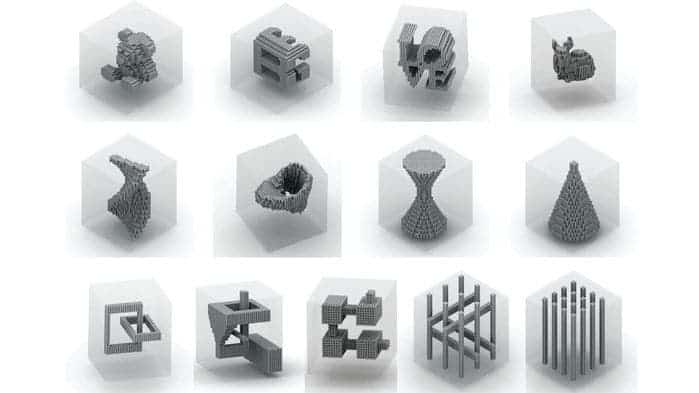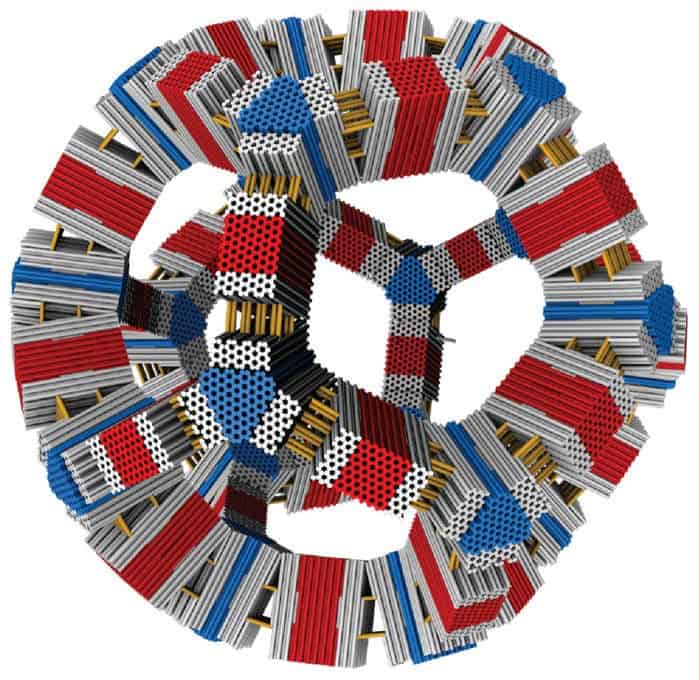Scientists have made a significant advancement in shaping DNA — they can now twist and turn the building blocks of life into just about any shape. In order to demonstrate their technique, they have shaped DNA into doughnuts, cubes, a teddy bear, and even the Mona Lisa.

Scientists have long desired to make shapes out of DNA. The field of research emerged in the 1980s, but things really took off in 2006, with the advent of a technique called DNA origami. As the name implies, it involves transforming DNA into a multitude of shapes, similar to the traditional Japanese technique of origami. The process starts with a long strand placed on a scaffold with the desired sequence of nucleotides, dubbed A, C, G, and T. Then, patches of the scaffold are matched with complementary strands of DNA called staples, which latch on to their desired target. In 2012, a different technique emerged — one which didn’t use scaffolds or large strands of DNA, but rather small strands that fit together like LEGO pieces.
Both techniques became wildly popular with various research groups. Scientists started to coat DNA objects with plastics, metals, and other materials to make electronic devices, electronics, and even computer components. But there was always a limitation: the size of conventional DNA objects has been limited to about 100 nanometers. There was just no way to make them bigger without becoming floppier or unstable in the process. Well, not anymore.

Groups in Germany, Massachusetts, and California all report that they’ve made dramatic breakthroughs in DNA origami, creating rigid modules with preprogrammed shapes that can assemble with other copies to build specific shapes — and they have a variety of shapes to prove it.
A German team, led by Hendrik Dietz, a biophysicist at the Technical University of Munich, created a miniature doughnut about 300 nanometers across. A Massachusetts team led by Peng Yin, a systems biologist at Harvard University’s Wyss Institute in Boston, created complex structures with both blocks and holes. With this technique, they developed cut-out shapes like an hourglass and a teddy bear. The third group led by Lulu Qian, a biochemist at the California Institute of Technology in Pasadena, developed origami-based pixels that appear in different shades when viewed through an atomic microscope. Taken together, these structures represent a new age for DNA origami.
Furthermore, it’s only a matter of time before things get even more complex. Yin’s group actually had to stop making more complex shape sbecause they ran out of money. Synthesizing the DNA comes at the exorbitant price of $100,000 per gram. However, Dietz and his collaborators believe they could dramatically lower the price by coaxing viruses to replicate the strands inside bacterial hosts.
“Now, there are so many ways to be creative with these tools,” Yin concludes.
The technique isn’t just about creating pretty DNA shapes. Someday, this approach could lead to a novel generation of electronics, photonics, nanoscale machines, and possibly disease detection, Robert F. Service writes for Science. The prospect of using DNA origami to detect cancer biomarkers and other biological targets could open exciting avenues for research and help revolutionize cancer detection.
Journal References:
- Klaus F. Wagenbauer, Christian Sigl & Hendrik Dietz. Gigadalton-scale shape-programmable DNA assemblies. doi:10.1038/nature24651.
- Grigory Tikhomirov, Philip Petersen & Lulu Qian. Fractal assembly of micrometre-scale DNA origami arrays with arbitrary patterns. doi:10.1038/nature24655.
- Luvena L. Ong et al. Programmable self-assembly of three-dimensional nanostructures from 10,000 unique components. doi:10.1038/nature24648.
- Florian Praetorius et al. Biotechnological mass production of DNA origami. doi:10.1038/nature24650.






